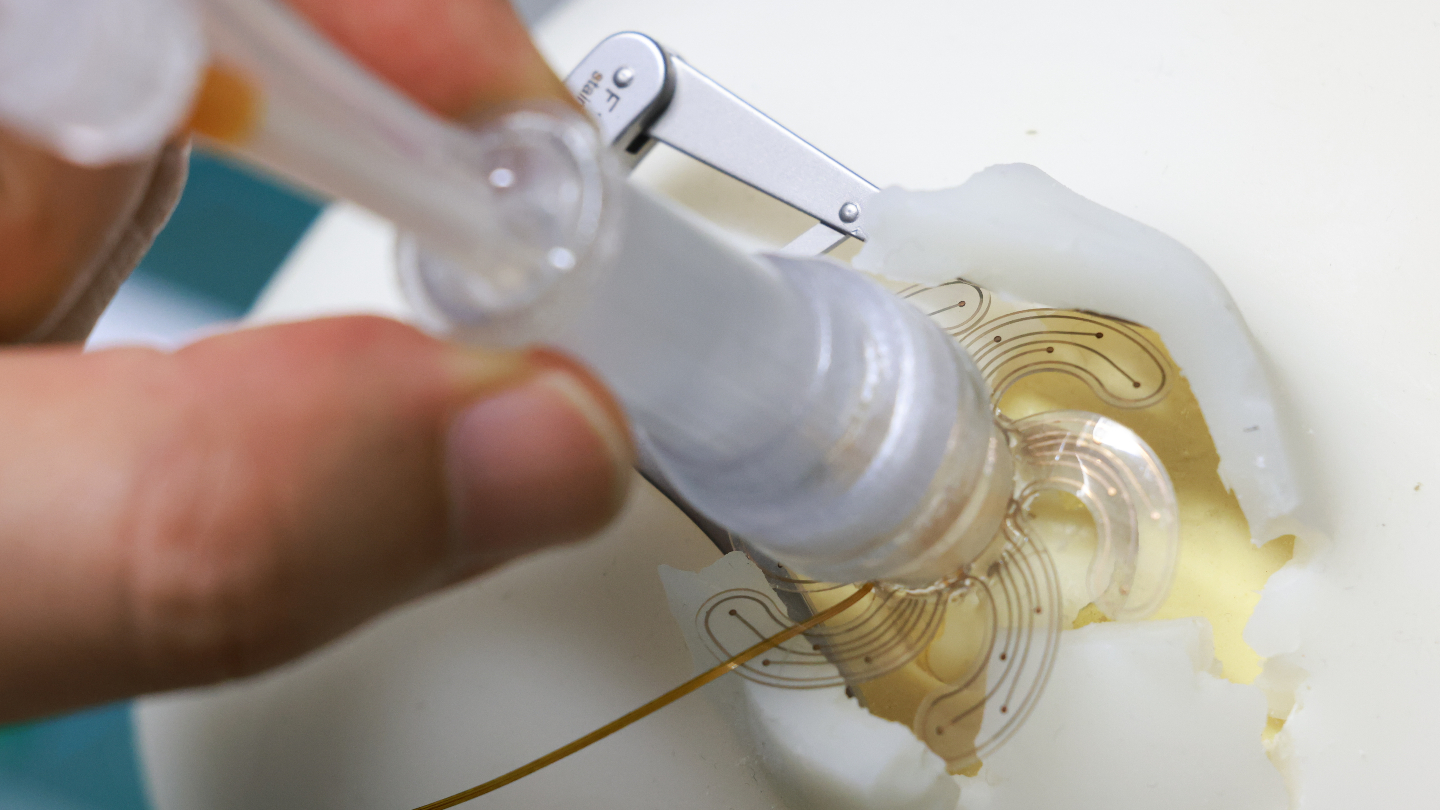A flower-shaped soft robot could make brain monitoring less invasive |
 |
| Every print subscription comes with full digital accessA new type of brain sensor consists of flexible “petals” (pictured) that are inverted into a central hub before insertion through a small hole in the skull and then “bloom” outward to lie flat on the brain's surface.Alain Herzog/École Polytechnique Fédérale de LausanneBy Bob HirshonA tiny, flexible machine might one day help neuroscientists eavesdrop on electrical activity in the brain, allowing them to pinpoint and potentially treat seizures.Inserted into the skull through a hole just 1 to 2 centimeters wide, the flower-shaped device unfurls a flexible array of sensors that contact the brain’s surface, allowing it to monitor electrical activity, researchers report May 10 in . A successful demonstration on a minipig suggests the device could be a less invasive way to place sensors directly on the brain, which currently can require removal of a large section of skull.The device is known as a soft robot: soft, because unlike traditional mechanical devices, it’s made of flexible materials, and robot, because its sensory apparatus moves, opening like a flower once implanted ().“Of all the soft robotics that I’ve seen, it’s kind of the one that you say, ‘Wow, this is really going to change, potentially, the way we do things in neurosurgery,’” says Joseph Madsen, a neurosurgeon at Harvard Medical School who was not involved in the study. “The idea of a robot that kind of internally unfolds and goes over the brain is just very elegant.”The robotic device consists of a central hub surrounded by six flat, petal-shaped sensors made of a soft, flexible material. At first, the petals are inverted into the hub. “It’s a bit like a glove where … you flip it outside in,” says Stéphanie Lacour, a bioengineer at École Polytechnique Fédérale de Lausanne in Geneva.Once inside the skull, a flow of saline solution through the hub gently forces the petals open, where they then lay flat against the surface of the cerebral cortex. Sensors in each petal signal when they’re in place and then start monitoring the brain, sending information back to a monitor via electrical wires.Lacour and colleagues tested a prototype in the brain of a minipig, successfully deploying the roughly daisy-sized sensor array inside the skull and recording electrical activity. The technology could be sized up to cover a larger area for human use, Lacour says. Future versions could be bidirectional, she says, not only sensing brain activity but also stimulating it. That might allow the device to stop seizure activity before it begins, stimulate brain areas damaged by stroke or act as a brain-machine interface to allow people to control devices ().The researchers have created a company to further develop the technology and conduct the additional testing that will be required to gain approval for use in human patients.Questions or comments on this article? E-mail us at feedback@sciencenews.org | Reprints FAQS. Song . Deployment of an electrocorticography system with a soft robotic actuator. Published online May 10, 2023. doi: 10.1126/scirobotics.add1002.Our mission is to provide accurate, engaging news of science to the public. That mission has never been more important than it is today. As a nonprofit news organization, we cannot do it without you. Your support enables us to keep our content free and accessible to the next generation of scientists and engineers. Invest in quality science journalism by donating today.Science News was founded in 1921 as an independent, nonprofit source of accurate information on the latest news of science, medicine and technology. Today, our mission remains the same: to empower people to evaluate the news and the world around them. It is published by the Society for Science, a nonprofit 501(c)(3) membership organization dedicated to public engagement in scientific research and education (EIN 53-0196483). © Society for Science & the Public 2000–2023. All rights reserved. Subscribers, enter your e-mail address for full access to the archives and digital editions.Not a subscriber? Become one now. |
May 11th, 2023 |
| source |